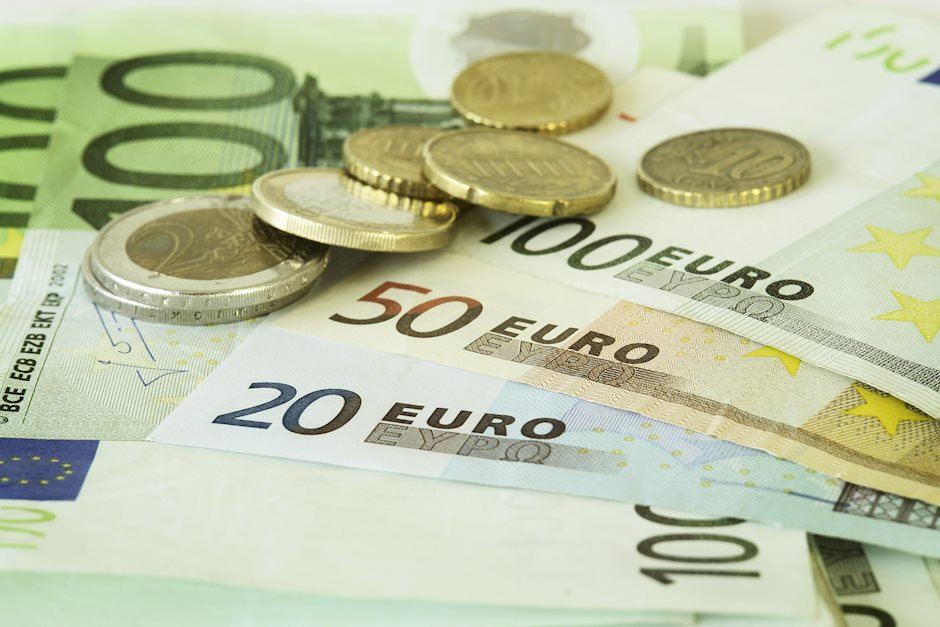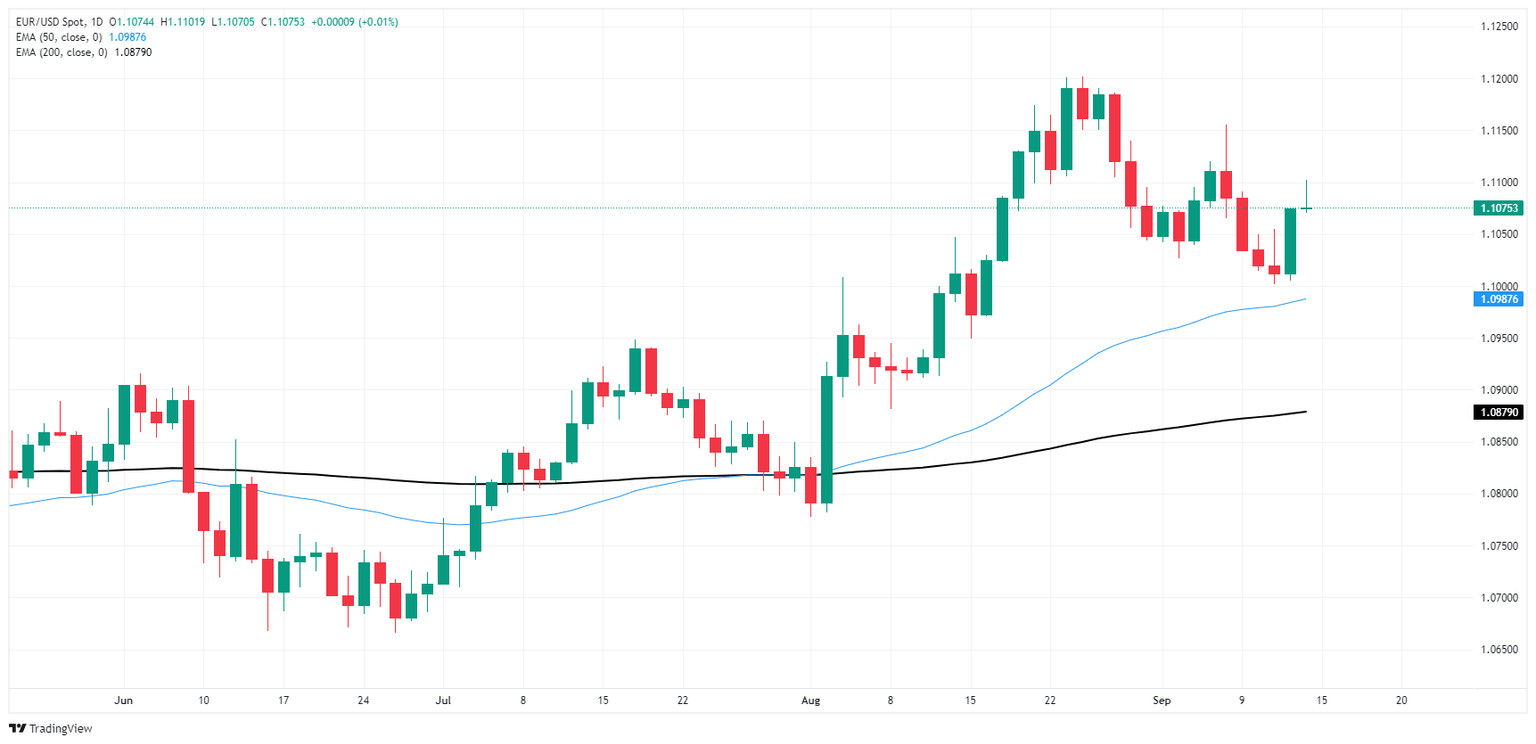EUR/USD flubs attempt to recapture 1.11, closes flat on Friday
- EUR/USD may have reached too far, too fast in midweek recovery.
- ECB rate cut bump proved fleeting as markets pivot to focus on Fed.
- Investors are jostling for position as rate market weigh odds of a 50 bps Fed cut.

EUR/USD kicked back into the 1.1100 handle on Friday, before market forces weighed on the Euro once again and returned Fiber to the day’s opening bids. The pair has fumbled a near-term technical recovery after a midweek pivot back into the bullish side, and the pair remains constrained as traders pivot to watch for the Federal Reserve’s (Fed) upcoming rate call next week.
The European Central Bank (ECB) cut its main refinancing rate to 3.65% early Thursday this week from 4.25%, dropping their main refi rate by 60 bps. The move helped to spark a brief bullish tilt in the Euro, but momentum has already faltered as Fed rate cut expectations continue to dominate the global market psyche. According to the CME’s FedWatch Tool, rate traders are pricing in a 45% chance of an initial 50 bps rate cut from the Fed when the US central bank gathers to make its rate decision on September 18.
The University of Michigan’s Consumer Sentiment Index rose to 69.0 in September, reaching a four-month high as surveyed consumers’ outlook on the US economy slowly improves following months of declining economic expectations. The upside tilt in UoM survey results helped to anchor rate cut expectations heading into next week, despite the UoM also noting an uptick in 5-year Consumer Inflation Expectations to 3.1% in September from the previous 3.0%.
US Export and Import Price Indexes also declined sharper than expected in August, with the Export Price Index printing a -0.7% contraction versus the expected -0.1%, reversing the previous month’s 0.5% as inflation pressures appear to ease in trade conditions. The MoM Import Price Index in August contracted 0.3%, below the expected -0.2% and down from the previous period’s 0.1%.
EUR/USD price forecast
Despite a near-term decline from 13-month highs set in late August near 1.1200, short pressure is facing significant challenges from Fiber bidders, and the pair refuses to dip all the way back to the 50-day Exponential Moving Average (EMA) at 1.0984.
EUR/USD daily chart

Euro FAQs
The Euro is the currency for the 20 European Union countries that belong to the Eurozone. It is the second most heavily traded currency in the world behind the US Dollar. In 2022, it accounted for 31% of all foreign exchange transactions, with an average daily turnover of over $2.2 trillion a day. EUR/USD is the most heavily traded currency pair in the world, accounting for an estimated 30% off all transactions, followed by EUR/JPY (4%), EUR/GBP (3%) and EUR/AUD (2%).
The European Central Bank (ECB) in Frankfurt, Germany, is the reserve bank for the Eurozone. The ECB sets interest rates and manages monetary policy. The ECB’s primary mandate is to maintain price stability, which means either controlling inflation or stimulating growth. Its primary tool is the raising or lowering of interest rates. Relatively high interest rates – or the expectation of higher rates – will usually benefit the Euro and vice versa. The ECB Governing Council makes monetary policy decisions at meetings held eight times a year. Decisions are made by heads of the Eurozone national banks and six permanent members, including the President of the ECB, Christine Lagarde.
Eurozone inflation data, measured by the Harmonized Index of Consumer Prices (HICP), is an important econometric for the Euro. If inflation rises more than expected, especially if above the ECB’s 2% target, it obliges the ECB to raise interest rates to bring it back under control. Relatively high interest rates compared to its counterparts will usually benefit the Euro, as it makes the region more attractive as a place for global investors to park their money.
Data releases gauge the health of the economy and can impact on the Euro. Indicators such as GDP, Manufacturing and Services PMIs, employment, and consumer sentiment surveys can all influence the direction of the single currency. A strong economy is good for the Euro. Not only does it attract more foreign investment but it may encourage the ECB to put up interest rates, which will directly strengthen the Euro. Otherwise, if economic data is weak, the Euro is likely to fall. Economic data for the four largest economies in the euro area (Germany, France, Italy and Spain) are especially significant, as they account for 75% of the Eurozone’s economy.
Another significant data release for the Euro is the Trade Balance. This indicator measures the difference between what a country earns from its exports and what it spends on imports over a given period. If a country produces highly sought after exports then its currency will gain in value purely from the extra demand created from foreign buyers seeking to purchase these goods. Therefore, a positive net Trade Balance strengthens a currency and vice versa for a negative balance.
Author

Joshua Gibson
FXStreet
Joshua joins the FXStreet team as an Economics and Finance double major from Vancouver Island University with twelve years' experience as an independent trader focusing on technical analysis.

















